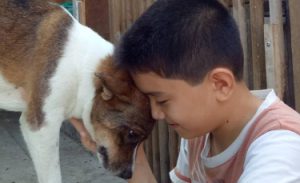Did the search dogs deployed on the sites of the September 11, 2001 attacks have any consequences? A team of specialists analyzed the health data of nearly one hundred of these canines to find out.
In the wake of the terrorist attacks of September 11, 2001 , hundreds of search and rescue dogs and their owners entered the affected sites to find the survivors under the rubble, then the bodies of the victims . For days, see weeks, the dog units worked hard in the middle of the ruins of the World Trade Center and the Pentagon in particular. Others were then brought in to excavate the Fresh Kills landfill , where 1.8 million tonnes of rubble from the Twin Towers were deposited.

This is what the team of Cynthia M. Otto , veterinarian , wanted to answer by carrying out a study at the University of Pennsylvania. The conclusions of their work have just been published in the Journal of the American Veterinary Medical Association .
The researchers collected and analyzed data on the health (x-rays of the lungs, blood tests, etc.) from 95 dogs that took part in search and rescue operations on Ground Zero , at the Pentagon and at the Fresh Kills dump. They also studied post-mortem information from these canines, with autopsies and tissue samples taken during their deaths . They then compared that data to that of 55 other rescue dogs that had not been involved in the search at the scene of the attacks.
Pleasantly surprising results
While Cynthia M. Otto and her colleagues expected to discover significant effects of these surgeries on the health of the 9/11 dogs, the results of their study revealed an entirely different reality . They are, in fact, observed that, on average, these quadrupeds had lived as long as their congeners who had not intervened after the attacks. Their lifespan was even in line with those corresponding to the standards of their races .
In addition, all of them died from causes quite common in senior dogs , such as cancer and arthritis . Even though more particles were found in their lungs (compared to other dogs), it did n’t seem to affect their quality of life .
To explain these results, Cynthia M. Otto puts forward various hypotheses, including the very efficient pulmonary filtering system that dogs have and their excellent physical condition .
To read also: A man creates and offers a refuge to more than 2000 disabled dogs and cats to offer them the necessary help and care!
All these four-legged heroes are no longer in this world, 19 years after the tragedy. The last survivor , a female Golden Retriever called Bretagne and born in September 1999, died in June 2016 . She suffered from kidney failure .











